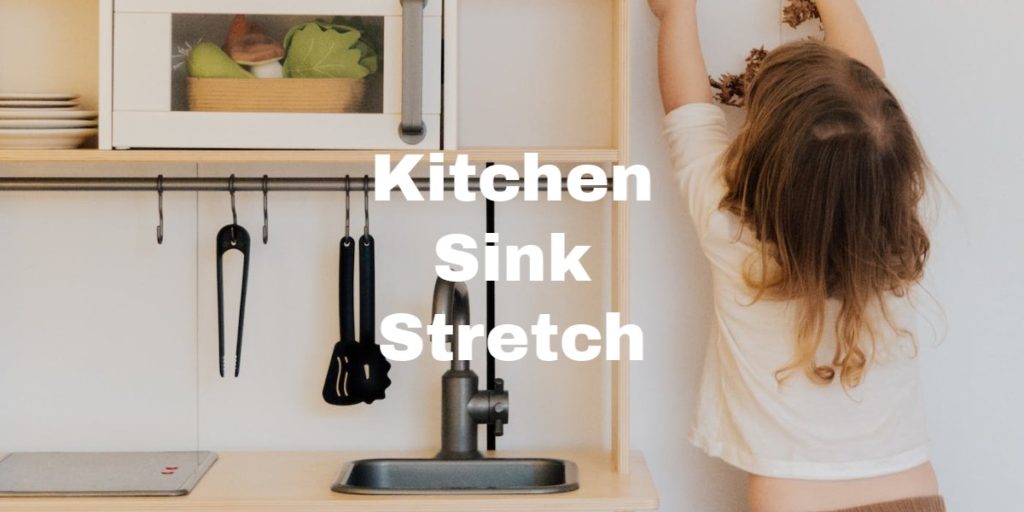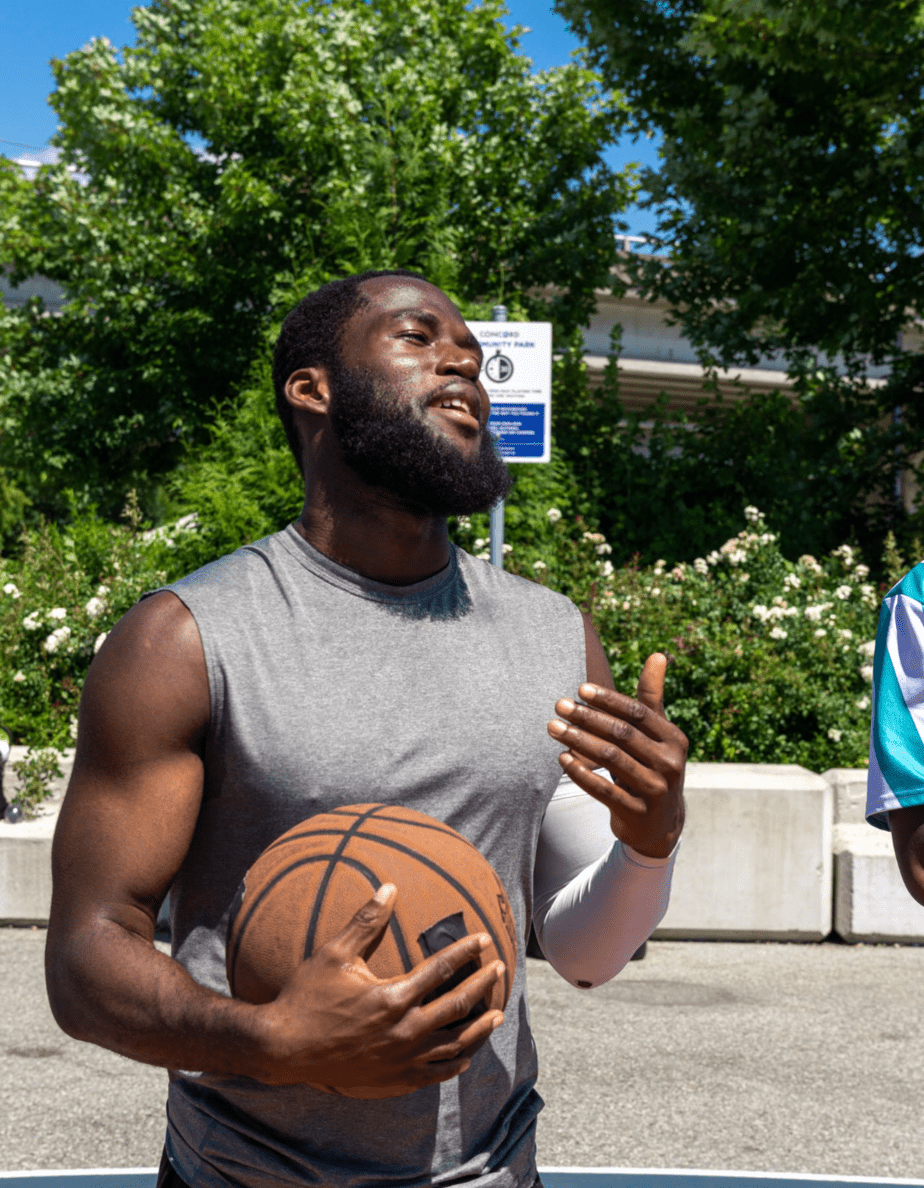Benefits of the Kitchen Sink Stretch: Your Ultimate Guide
I first heard of the Kitchen Sink Stretch from Gary Brecka, the Co-Founder and Chief Human Biologist at 10X Health, who has over 20 years of experience in biohacking and functional medicine. He was on the Front Row Dad’s podcast and had recommended the stretch to a member of the audience who was having back problems. He actually called it the “sink stretch”.
It’s a great way to wake up in the morning. It’s the safest stretch that you can do because you have four points of contact…the spine tricks the brain into thinking that you’re weightless and it floods that area with synovial fluid.
Gary Brecka, Front Row Dad’s Podcast
I incorporated the Sink Stretch into my repertoire of stretches and flexibility work that also includes couch stretches (part of the knees over toes guy routine) Jefferson curls, yoga flows, and dead hangs.
My wife has always done a variation of this, but the new twist was locking onto and gipping the sink rather than just lying your hands flat and balancing. I am a fan so I thought I would take the time and document all my research in this post so you can decide whether you want to add it to your routine.
How To Do A Kitchen Sink Stretch
Now that we’ve covered the mouthwatering benefits, let’s dive into the main course: how to perform the stretch. Follow these step-by-step instructions, and you’ll be a pro in no time:
- Positioning near the sink: Stand facing your kitchen sink (or any sturdy surface of a similar height) with your feet hip-width apart.
- Correct hand placement: Place your hands on the edge of the sink, shoulder-width apart.
- Leg positioning: Keeping your legs straight and feet firmly planted, slowly push your hips back and lower your torso until you feel a stretch in your hamstrings, lower back, glutes, and calves.
- The stretch itself: Hold the stretch for 15-30 seconds, breathing deeply and maintaining a straight back. Slowly return to the starting position and repeat 2-3 times.
Be patient and consistent, and you’ll see improvements over time.
| Day | Exercise 1 | Exercise 2 | Exercise 3 | Exercise 4 |
|---|---|---|---|---|
| Monday | KSS | Hip Flexor Stretch | Plank (Core Strengthening) | Walk/Jog |
| Tuesday | KSS | Piriformis Stretch | Push-ups (Core Strengthening) | Yoga |
| Wednesday | KSS | Quadriceps Stretch | Sit-ups (Core Strengthening) | Swim/Bike |
| Thursday | KSS | Hip Flexor Stretch | Plank (Core Strengthening) | Walk/Jog |
| Friday | KSS | Piriformis Stretch | Push-ups (Core Strengthening) | Yoga |
| Saturday | KSS | Quadriceps Stretch | Sit-ups (Core Strengthening) | Swim/Bike |
| Sunday | Rest | Rest | Rest | Rest |
What Is The Kitchen Sink Stretch?
So, what exactly is the Kitchen Sink Stretch? Contrary to what the name might suggest, it doesn’t involve scrubbing dishes or unclogging drains (although, that could be a workout in itself). The Kitchen Sink Stretch is a simple, yet effective stretching exercise that targets key muscle groups such as the hamstrings, lower back, glutes, and calves.
Its unusual name originates from the fact that you can perform it right at your kitchen sink—or any sturdy surface of a similar height—making it the ideal stretch for busy folks who don’t have time for a full-blown gym session.
Benefits
The stretch has a smorgasbord of benefits to offer, ranging from improved flexibility to better sleep quality. Some of the most noteworthy perks include:
- Improved flexibility: Say goodbye to feeling like the Tin Man from the Wizard of Oz; this stretch will have you feeling more limber in no time.
- Reduced lower back pain: Tired of aching like an old rocking chair? The Kitchen Sink Stretch helps alleviate lower back pain by targeting those tight muscles and easing tension.
- Enhanced athletic performance: For all you weekend warriors out there, this stretch can help you stay in tip-top shape and avoid injuries.
- Increased blood circulation: Keep things flowing with this stretch, which can help improve circulation throughout your body.
- Reduced risk of injury: No one wants to be benched, and this stretch can help keep you in the game by reducing your risk of injury.
- Improved posture: Stand tall and proud with better posture, courtesy of the Kitchen Sink Stretch.
- Better sleep quality: Catch more Z’s and wake up feeling refreshed and rejuvenated.
Synovial Fluid
Stretching, like the Kitchen Sink Stretch, can help maintain or improve joint health by promoting the circulation of synovial fluid. When we stretch, we move our joints and muscles, which helps the synovial fluid circulate throughout the joint. This can enhance lubrication, improve the distribution of nutrients, and assist with shock absorption.
Synovial fluid is an essential component of the joints in our bodies. It serves multiple important functions:
- Lubrication: Synovial fluid acts as a lubricant, reducing the friction between the cartilage and other tissues in joints during movement. This allows your joints to move smoothly and freely.
- Nutrient distribution: It provides nutrients to the cartilage and removes waste from the joint, which is crucial for joint health.
- Shock absorption: The synovial fluid helps absorb shock, protecting the bones from impact during activities like running, jumping, or lifting weights.
Regular stretching can also help increase the production of synovial fluid, leading to better nourishment and lubrication of joints. This is particularly important as we age, as synovial fluid naturally decreases, contributing to joint stiffness and discomfort.
Common Culprits to Avoid
Even the best of us can make mistakes, but when it comes to the Kitchen Sink Stretch, there are a few common culprits to avoid:
- Overstretching: Don’t bite off more than you can chew—pushing your body beyond its limits can do more harm than good.
- Incorrect form: Pay attention to your posture during the stretch, as improper alignment can lead to unnecessary strain or injury.
- Bouncing during the stretch: Avoid the urge to bounce or jerk during the stretch, as this can cause muscle tears. Instead, focus on slow and steady movements.
Customizing the Kitchen Sink Stretch
Like a good recipe, the Kitchen Sink Stretch can be modified to suit different skill levels and flexibility. If you’re just starting, try bending your knees slightly during the stretch. As your flexibility improves, work on keeping your legs straighter.
For those who are more advanced, try placing one foot on top of the other to intensify the stretch and target the muscles more effectively.
The Perfect Pairings: Complementary Stretches and Exercises
The Kitchen Sink Stretch is a fantastic addition to your stretching menu, but it’s even more effective when combined with other complementary stretches and exercises:
- Hip flexor stretches: These can help improve overall flexibility and balance.
- Piriformis stretches: Ideal for targeting those deep glute muscles and relieving sciatic pain.
- Quadriceps stretches: Give your quads some love to prevent muscle imbalances and improve athletic performance.
- Core strengthening exercises: A strong core is key to maintaining proper posture and preventing injuries.
Safety Tips for a Smooth Stretching Experience
Before you dive headfirst into the Kitchen Sink Stretch, here are a few safety tips to keep in mind:
- Know your limits: Listen to your body and only stretch to the point of mild discomfort, not pain.
- Warm up before stretching: Get your blood pumping with a brief warm-up before diving into your stretching routine.
- Stretch only to the point of mild discomfort: Remember, stretching should be gentle and never painful.
- Seek medical advice for pre-existing conditions: If you have any pre-existing medical conditions or concerns, consult your doctor before adding the Kitchen Sink Stretch to your routine.
The Last Bite: Wrapping Up
The Kitchen Sink Stretch is a versatile and effective addition to any stretching routine. With its myriad of benefits, ranging from improved flexibility to better sleep quality, it’s no wonder that so many people have found success with this simple stretch.
Frequently Asked Questions
Can the Kitchen Sink Stretch help reduce lower back pain?
Yes, the Kitchen Sink Stretch targets key muscle groups, including the lower back, which can help alleviate lower back pain and promote overall flexibility.
How often should I perform the Kitchen Sink Stretch?
For optimal results, it’s recommended to perform the Kitchen Sink Stretch daily, holding each stretch for 15-30 seconds and repeating it 2-3 times.
Is the Kitchen Sink Stretch suitable for all skill levels and ages?
Yes, the Kitchen Sink Stretch can be modified to suit different skill levels and flexibility, making it suitable for people of all ages and fitness levels.
Can the Kitchen Sink Stretch improve my athletic performance?
Absolutely! The Kitchen Sink Stretch helps improve flexibility, reduces the risk of injury, and promotes better circulation, all of which contribute to enhanced athletic performance.
Do I need any special equipment to perform the Kitchen Sink Stretch?
No special equipment is required for the Kitchen Sink Stretch. All you need is a sturdy surface, like a kitchen sink or countertop, at a comfortable height to support your hands during the stretch.

Troy Wallace
Troy Wallace is Certified Basketball Speed Specialist and shares his experiences in trying to stay as healthy as possible to stay on the court. He is active in coaching youth basketball in YMCA, Team Work Sports Nebraska, and, currently, in the Jr. Warriors program in Omaha, NE. Visit Troy's Full Author Bio Page or email him directly.
Meaningful conversations happening daily about training, recovery, and injury-specific rehabilitation as well as sport-specific discussions on playing, coaching and refereeing your favorite sport. We welcome experts and those with curious minds seeking answers.
Join The Stay On The Court Community!